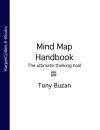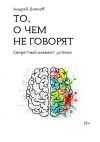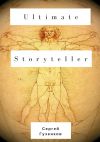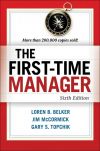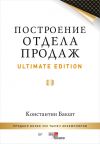Правообладателям!
Представленный фрагмент книги размещен по согласованию с распространителем легального контента ООО "ЛитРес" (не более 20% исходного текста). Если вы считаете, что размещение материала нарушает ваши или чьи-либо права, то сообщите нам об этом.Читателям!
Оплатили, но не знаете что делать дальше?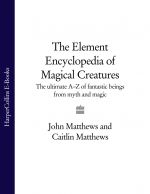
Текст бизнес-книги "The Element Encyclopedia of Magical Creatures: The Ultimate A–Z of Fantastic Beings from Myth and Magic"
Автор книги: John Matthews
Раздел: Жанр неизвестен
Текущая страница: 6 (всего у книги 7 страниц)
APOTHARNI
An estranged race of centaur-like beings, referred to in a work published in the 16th century, that are half human, half horse, like the centaurs of classical Greek and Roman mythology. Unlike centaurs the Apotharni are both male and female (centaurs are only male). The females are bald but have hair on their chins in a similar fashion to goats and Unicorns. They are described as inhabiting marshy areas.
APRES
The Apres is an heraldic animal. It takes the form of a bull with a short tail like a bear. On the arms of the Muscovy Company, the Apres appears as the left-handed supporter of their shield.
APSARAS
The Apsaras are beautiful water nymphs in Hindu mythology, who made their appearance at the time of the Churning of the Water of creation and now dance in heaven before the throne of Indra. They are particularly associated with the fig and banana trees, and passers by may hear them playing lutes and cymbals. They are companions to the Gandhavas, spirits of air and music. Tradition describes them as the consorts given as reward to the heroic dead at the time of their arrival in Paradise. Perhaps because of this, no single group of beings would take them as wives, and this gave rise to a belief in their promiscuous behaviour. Their other attributes include bestowing good fortune in games of chance and causing madness or derangement in those who hear their music. They live in the water with plants and trees, or, if on land, with peacocks and arjuna trees. They entice men with their smiles but self-disciplined men are impervious to their dances and callings.
APSASU
The Apsasu are the form that lamas take when they appear as temple guardians of Mesopotamian temples, usually as female human-headed cows and lionesses who stand protectively at gateways.
APTALEON
In Babylonian myth, the Aptaleon was a beast with a goat’s body and two serrated horns with which it felled trees, sawing away at the wood. This work raised a great thirst which was only quenched by the waters of the Euphrates river. If the Aptaleon wandered into the desert and found an erechire bush, its horns would become locked fast in the branches. (See Analopos.)
ARANDA
One of the names of the great cosmic serpent in the traditions of the native Australians. Like its fellow, Yurluggur, the Aranda inhabited the depths of the deepest billabongs and rivers, where the currents run so deep they cannot be perceived on the surface. Humans unwise enough to draw water or fish in these spots are often caught unawares; the Aranda rises and takes its victim below in one gulp, leaving no sign that it has even been there.
ARASSAS
A bizarre creature from French folklore, which occupies caves in the French Alps. It has the body and legs of a lizard and the head of a cat. It preys on unsuspecting travellers.
ARCADIAN HIND
An alternative name for the Cerynian Hind in classical Greek and Roman mythology. Hercules sought it for the third of his twelve Labours.
ARCTOPHONOS
One of two giant hunting dogs belonging to the giant Orion in classical mythology. Its fellow was named Ptoophagos. Between the two of them, they were powerful enough to hunt down bears.
AREOP-ENAP
In the creation myths of the Nauru people of the South Pacific, the Areop-Enap was the Ancient Spider who created the Earth and Heavens by prising apart mollusc shells with the help of two snails and a worm. The two snails became the sun and moon, while the worm, Rigi, was the one who forced the molluscs apart. His efforts were such that his sweat became the salt of the sea as he heaved them open. In other stories, Rigi was a butterfly who flew between earth and sea to separate them. Areop-Enap’s son was Areop-It-Eonin or Young Spider, who created fire by bringing it from the abode of thunder and lightning.
AREYIAI
An alternative name for the Harpies of Greek mythology, said to derive from the cries they made. Areyiai translates as ‘Slicer’ or ‘Tearer’, giving a clear indication of the kind of creature this was. Originally, they were goddesses of the wind, as the meaning of the word Harpy – ‘to transport’ or ‘to snatch’ – suggests. Certainly they are unpleasant creatures, with hag-like faces, pendulous breasts, bear’s ears and bat wings.
ARGOS/ARGUS
In Greek and Roman mythology, Argos was a giant with a thousand eyes. Sometimes called Panopes (‘he who sees everything’), the giant almost never slept, since at all times, when some of his eyes were closed, others would be open. When Zeus, the father of the gods, had an affair with the nymph Io, his jealous wife Hera kidnapped Io and had her imprisoned under the watchful eyes of Argos. Discovering this, Zeus sent Hermes to rescue her. Hermes lulled the giant to sleep with his lyre, and then killed him and cut off his head. Later, when Hera heard this, she collected Argos’ eyes and set them in the tail of the peacock, a bird that was sacred to her.
ARIA
A variety of malevolent spirit in the folklore and beliefs of the Maori people of New Zealand. Seen as vehicles for the Atua, or spirits, the Aria were responsible for inflicting disease and misfortune, and even the sight of one could bring disaster. The fearsome form taken by this creature was that of the green gecko. A story, recorded in 1823, tells of a ship’s officer, who was carrying one of these reptiles in his hand, asking a young Maori woman for its name in her language. The woman drew away from him in terror, repeating over and over that this was one of the Ari, which fed upon the bodies of the dead.
ARIES
A giant winged ram from the mythology of Greece and Rome. It was known as Chrysomallus, ‘The Ram with the Golden Fleece’, and this was its most famous attribute. Its fate is inextricably bound up with that of the Prince Phryxus, son of King Athamus of Thesaly. When the young man was accused by his stepmother of causing a famine in his father’s land, he fled, mounted on the ram’s back. Having reached safety at Colchis, he gave thanks to Zeus, the king of the gods, by sacrificing the ram. Its miraculous fleece was hung in the temple of the god. It later became the object of the quest for the Golden Fleece undertaken by the hero Jason and his famed Argonauts. Zeus, pleased with the sacrifice, later placed the ram in the heavens as the constellation of Aries, which rules over the astrological period 21 March to 21 April.
ARION
The name of a mighty horse in classical Greek and Roman mythology. Homer calls this beast ‘the swift horse, divine in origin’. Arion was said to be the offspring of the sea god Poseidon, who mated with the goddess Demeter, while both were in the form of horses. Arion was said to be partly human, its hooves resembling human feet, while from its back grew eagle wings. It also possessed the gift of speech, and could prophesy events to come. Among its many riders were the semi-divine heroes Hercules, Copreus and Andrastus.
ARMOUCHIQUOIS
Among the strange beings reported by the first Western explorers of North America, the Armouchiquois were some of the most curious. Their heads were very small and their bodies very large, and their arms and legs as lean as skeletons yet straight and strong. When they sat on their heels, their knees were more than half a foot over their heads. They were powerful, strong and determined and much feared by the Native American tribes.
ARUSHA AND ARUSHI
Two of the great horses of the sun in the Hindu mythology of India. The stallion Arusha and the mare Arushi are the lead horses, pulling the chariot of the sun god Suraya across the heavens.
ARVAK
One of the horses of the sun in Norse, Scandinavian and Icelandic legends. Arvak, whose name in Old Icelandic means ‘Early Awake’, was one of two horses that pulled the chariot of the sun god Sol/Sunna across the sky, the other horse of the pair being called Alsvid or ‘All Swift’.
ARZSHENK
A gigantic humanoid with the head of a bull in the Zoroastrian religion of ancient Persia. Arzshenk is the king of the Devs, demons and servants of the supreme evil being, Ahriman. They are involved in perpetual battle against the Izeds, who represent goodness. The monster was finally killed by the hero Rustram after a battle lasting several days. (See also Minotaur.)
ASDEEV
A great white dragon from ancient Persian tradition. The hero Rustram, who has much in common with the classical Greek Hercules, fights and defeats this creature as one of a number of battles undertaken in order to prove himself the hero of his people.
ASHUAPS
Similar to the Loch Ness Monster, this lake-dwelling beast, described as 50–60 ft long, able to lift itself some 3 ft above the water, and either black or deep blue in colour, was first recorded in 1950 in Lac Saint-Jean in Canada. The name Ashuaps derives from a river in the area where the Native American Montagnais people were already familiar with the monster. Subsequent sightings, in 1977 and 1978, have confirmed the presence of something large in the water. In 1978, several members of a Native American family from the local reservation were thrown from their canoe by something that rose up from beneath them. Not long after, two other groups saw what they believed to be the monster, thrashing the waters into foam in the nearby Ashuapmouchouan river. The presence of this curious creature, much like that of the Loch Ness monster in Scotland, has created a considerable amount of media interest, and in recent years a number of investigative teams have frequented the area in the hope of catching sight of the elusive Ashuaps. To date, however, no final verdict has been reached about the existence or nature of this creature.
ASIN
A female cannibal monster from the folklore of the Native American Alsea people of the north-west coast of America. Asin lives in the forest and takes her victims from unsuspecting wanderers who come near to the edge of the woodland. She is especially fond of children, and uses her sweet singing voice to lure them into her clutches. Once there, they are never seen again. For this reason, the Asin is often seen as a nursery-frightener, intended to keep unwary children from wandering into dangerous territory.
ASIPATRA
A gigantic bird in the folklore of the Indian continent, the Asipatra lives in the underworld of Yamapura and tortures the souls of condemned sinners. Its name means ‘Sword-Wing’ – the feathers of its fleshy wings are scythe-like and slice through air. It also has claws like knives. It lives in the branches of a tree made from spears.
ASP TURTLE
An alternative name for the Aspidochelone, frequently referred to in early European travellers’ tales.
ASPIDOCHELONE
A gigantic sea turtle frequently cited in sailors’ yarns from earliest times. In classical Greece it was known as Aspidochelon or Aspidodelone or as the Asp Turtle, though the Physiologus refers to it as the as Fastitocalon. This dates it to at least as early as the 2nd century BC, in Alexandria, where the Physiologus was compiled. Medieval bestaries named it as Aspidoicholon or Apsodo-Toroise, while Middle Eastern sources, probably deriving from Alexandrian writings, knew it as Zaratan. It was said to be so vast that it resembled an island floating in the sea. Mud and soil accumulated on its back and bushes and shrubs grew there, giving it the appearance of a floating island. There are numerous sailors’ tales which described ships anchoring off what they thought was an island, going ashore for the night and lighting a fire. Only at this point did the creature awaken, and sink beneath the water, carrying the unfortunate mariners with it. One of the earliest accounts is in the medieval Voyage of St Brendan, when the saint and his companions encounter the great beast and come very close to being destroyed by it – only escaping because of the holiness of their leader. In this source, it is known as Jasconius. Medieval Christian writers associated it with evil, and described its great open mouth – which it used as a kind of trawl-net as it moved through the ocean – as a gateway to hell. Yet the Aspidochelone seems to have lived exclusively on a diet of fish, which swam into its open jaws, attracted by the surprisingly sweet smell that issued from it. J.R.R. Tolkien has a poem about the Fastitocalon, based on the medieval accounts of the Aspidochlone, in his collection The Adventures of Tom Bombadil.
ASPIS
According to the legend and folklore of medieval Europe, the Aspis was a small dragon with two feet rather than the usual four. While its touch was poisonous and even to come close to it was to invite death, its bite was instantaneously fatal. It had one weakness however – its susceptibility to music, which could make it docile. Eventually the Aspis became aware of this and reacted to the sound of music by sticking the end of its tail in one ear and pressing the other to the ground. However, once in this position, it was virtually helpless, allowing its prey to escape. The name Aspis actually means ‘serpent’, suggesting confusion in the minds of medieval writers between this creature and the more familiar dragon.
ASS
The most frequently described symbolism for the ass, or its lowlier brother the donkey, focuses on its stupidity, stubbornness, inferiority and fertility, as well as its lasciviousness. An ass in a lion’s skin is said to suggest a blustering coward, or a fool pretending to be wise. The earliest depictions of the ass come from Egyptian and Syrian monuments, and these represent not the humble donkey, but the wild ass – the onagar – a much larger animal which is more ancient than the horses described in Semitic traditions. This beast was used like a horse to draw the heavy chariots of the Sumerians and as a baggage animal for their armies. As a desert animal, the ass was associated with the Egyptian god of evil, Set, to whom it was sacrificed, and in later Egyptian symbolism Set himself was sometimes personified as a donkey.
For the classical Greeks, the ass represented sloth and infatuation; it was sacred to Dionysus and Priapus and the god Typhon was sometimes depicted with the head of an ass. It was also sacred to Cronos, and Silenus, the god of wine, is sometimes shown riding an ass. During the Roman holiday of Vestalia, donkeys were garlanded and given sweet honey cakes to eat. In China, the Taoist immortal Chang Kuo-lao, a bringer of fertility to childless mothers, rides on a magical donkey which, when not required, becomes a drawing of a donkey on a sheet of paper, and can be folded up and put away. In Hindu mythology, asses drew the chariot of the underworld god Ravana when he abducted the beautiful maiden Sita, and is thus seen as an inauspicious animal by the Hindus. For Buddhists, the ass is a symbol of simplicity and asceticism and is portrayed as sleeping by the roadside on a bed of leaves.
Plutarch, the Roman writer, says the ass was revered by the Jews, because it found springs in the desert during the flight from Egypt. The biblical wild ass was symbolic of wildness and desolation. People of wealth drank asses’ milk and, like Cleopatra, occasionally bathed in it. Early Christians were accused by their opponents of worshipping the ass, and the Roman writer Tertulian mentioned the existence of caricatures of ‘the ass-hoofed god of the Christians’, which was also believed to have ass’s ears. The 1st-century Gnostics believed that the Lord Sabbaoth, a being of great evil, had an ass’s head.
During the medieval era, on 14 January every year, the Festival of Fools was celebrated, and the Feast of the Ass was an important part of this. Sacred individuals and royalty were caricatured at this event with impunity, and the biblical stories of Baalam’s Ass and the Flight into Egypt were burlesqued. More seriously, in Christian tradition, the ass or donkey symbolized Christ’s entry into Jerusalem. In later Christianity, however, it came to represent the devil, as it brayed in the night and was said to bring bad luck. This notion was shared by the followers of Islam, who held the ass to be an accursed creature that desired to bring misfortune to its owner and brayed to call up evil things.
In the ancient Persian religion of Zoroastrianism, the three-legged ass is often equated with the Unicorn because it has a single horn of gold growing from its forehead. In the Bundahish, a 9th-century commentary on the works of Zoroaster, the three-legged ass is described as pure white with eyes in the usual place and a further two in both the forehead and the crown of its head. It has three mouths, each the size of a house, a further three in its forehead and three more on its body. It is thus able to know whatever evil is being plotted or any attempt that might be made to harm it. The creature is so vast that the hooves of its three legs as it stands in the ocean cover an area large enough for a thousand sheep, while a similar number of horsemen could hide beneath a single spur of its hoof. It is considered to be a symbol of righteousness, a servant of the divine Lord Ahuramazda in the fight against evil. It purifies the putrid oceans with its urine, and the amber that washes up on the shore is believed to be its dung. Its white body is considered a symbol of purity and it is known as a champion of the oppressed.
In Welsh tradition, a king named March had been cursed with ass’s ears, which he kept hidden beneath a hood. But in the end he could not contain the secret any longer, and whispered it into a bed of reeds. Later, a poor musician made a flute out of one of these reeds, and found that when he blew it, instead of music it would only repeat over and over, ‘King March has ass’s ears.’ The musician was able to make use of this information when the king imprisoned him – in return for freedom and a purse of gold, he promised to destroy the flute. But, before this could happen, a gust of wind blew through the flute causing it to play on its own so that the secret was out.
The great sacred novel of the classical world, The Golden Ass by Lucius Apuleus, tells the story of a man turned into an ass for mocking the gods. His subsequent adventures teach him a great deal about the sacred mysteries and, in the end, he receives a vision of the goddess Isis who restores him to human form.
ASS-BITTERN
A strange hybrid creature found in heraldic bestiaries. It had the head of the large water bird, the bittern, and the body of an ass.
ASTERION
The name of the Minotaur in classical Greek mythology.
ASTROPE
One of the horses responsible for pulling the chariot of the sun god in classical Greek mythology. Like its fellows, Astrope was described as pure white, with fire-breathing nostrils. Each morning the nymphs of Time harnessed the great steeds to the chariot of Helios, which they drew across the heavens throughout the day. At night they were stabled in the Blessed Isles, where they fed on magical herbs. (See Horses of the Sun.)
ATARGATIS
In Semitic and Syrian myth, Atargatis was the moon goddess who became a mermaid after having given birth to Semiramis. Her shame was so great that Atargatis killed her lover Hadad, and assumed the tail of a fish. The Syrians would not eat fish out of respect for their goddess.
ATHACH
A monster from the folklore of the Scottish Highlands. The Athach may in fact be more than one creature, since the word athach simply means a monster or giant and was applied to several such beings as the Ludeag, a female demon who haunted Loch Nan Dubh, or the Bochan, which can assume a variety of monstrous shapes. Perhaps for this reason, descriptions of it are unclear, though it is said to haunt high places such as cliff sides or steep ravines.
ATRAOIMEN
A monstrous fish-like creature from Caribbean tradition.
Atraoimen became the host for the soul of the hero Kalinago who, tiring of life on the mainland, set sail in search of new lands, eventually arriving at the island of Santa Domingo. There he settled, married and sired many sons. But the sons grew jealous of their father and administered poison to him, at which point his soul passed into the Atraoimen and in this form he pursued his murderers. The sons fled in all directions and were dispersed across a number of islands. In each case, the sons killed the men of the islands, married their women and set up the heads of the slain warriors in caves so that, in time, their own sons could see them and would honour their fathers’ strength. Eventually Kalinogo, in the form of the Atraoimen, caught up with his sons and slew them. In the process of this pursuit, the Carib people spread across the islands, where they remain to this day.
Правообладателям!
Представленный фрагмент книги размещен по согласованию с распространителем легального контента ООО "ЛитРес" (не более 20% исходного текста). Если вы считаете, что размещение материала нарушает ваши или чьи-либо права, то сообщите нам об этом.Читателям!
Оплатили, но не знаете что делать дальше?